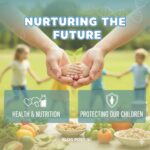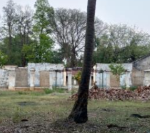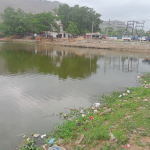Heatwaves are defined as prolonged periods of excessively hot weather. They can have significantly aggressive effects on an individual’s health. While heatwaves pose risks to everyone, children, in particular, are especially vulnerable.
Their developing bodies are prone to diseases and their dependence on parents susceptible to the harmful impacts of extreme heat. An advanced understanding of these risks to children and the ultimate health threats heatwaves pose is essential for minimizing any further repercussions.
🧒🏻 Why Are Children More Vulnerable to Heatwaves?
Children are the most affected beings of society during any form of climatic change. They are said to have a larger surface area in proportion to their body weight. Thus, they absorb more heat, making it harder for them to regulate their body temperature efficiently.
Secondly, children and babies seldom have an underdeveloped thermoregulation system. Therefore, it puts them in a dilemma as they can neither sweat nor cool down as effectively as adults.
Third, children are far more active than adults—their entire world revolves around having fun—which increases their exposure to the sun and makes it harder for their bodies to cool down.
Lastly, children are at a higher risk of dehydration during heatwaves because they are more likely to become dehydrated and they may not always be mindful of drinking water.
🌆 When the Environment Works Against Them
The Urban Heat Trap
Due to growing urbanization, the cities tend to be warmer. This happens to be a huge occurrence due to the large amounts of concrete and asphalt, which absorb and retain heat. This phenomenon is popularly known as the “urban heat island effect.” Hence, children living in urban areas may suffer higher temperatures than those in rural or coastal areas.
Breathing Becomes a Battle
Heatwaves often coincide with poor air quality, as high temperatures lead to an increased level of ozone. The combination of extreme heat and pollution can have an exasperated impact on children’s respiratory health, leading to asthma attacks and other complications.
🛡️ Protecting Our Young: A Vital Necessity
- Hydration First: Encouragement towards frequent water breaks. Avoiding sugary or caffeinated drinks is essential as they can contribute to dehydration.
- Smart Scheduling: Limiting a child’s outdoor activities to cooler parts of the day to avoid any reprimandable consequences.
- Cool Clothing: Wearing light-colored, loose-fitting clothing made of breathable fabrics like cotton can help keep children cool and away from heatwaves.
🏙️ Collective Action: What Communities & Governments Must Do
While individual actions are crucial, broader community efforts and government policies can play a key role in protecting children from heatwaves.
- Increasing the number of parks and shaded areas in urban settings can help reduce the urban heat island effect.
- Public education campaigns are essential to inform families about the risks of heatwaves and how to stay safe during extreme heat.
- Government efforts must include distribution of ORS (oral rehydration solution) packets in reasonable amounts to each family to avoid consequent heat strokes and dehydration.
👩🎓 The Youth Factor: From Witness to Warrior
It has been well established that our youth are the future. They can make an environmentally resilient effort by actively advocating for climate change and energy conservation. They can also contribute by encouraging the use of climate-friendly transportation, such as electrical vehicles, bicycles and public transportation.
The youth must make a vigorous effort in not only planting saplings themselves but also advising people to do the same. Local youth leaders could make a stringent effort in installing water dispensers in their respective localities for both passersby and animals alike.
🌍 Global Guardianship: The United Nations’ Role
The United Nations makes a global effort at promoting the Sustainable Development Goal 13 that focuses on climate action. SDG 13 calls for urgent action to combat climate change and its impacts, emphasizing the need to reduce greenhouse gas emissions, adapt to the changing climate, and promote sustainable practices.
🔗 In Conclusion: A Call to Care
Us as a society, community and fraternity must work towards implementing these actions to ensure a better and safer future for the torchbearers of our time ahead.
Join the movement. Be the change.
👉 Join Youth4Water Plus — a platform empowering young changemakers to lead climate action for a sustainable future.







